Best fall plants for privacy – 11 beautiful choices for seasonal garden screening
From colorful shrubs to lofty, late-blooming perennials, these choices will brighten up your garden while making it feel more private
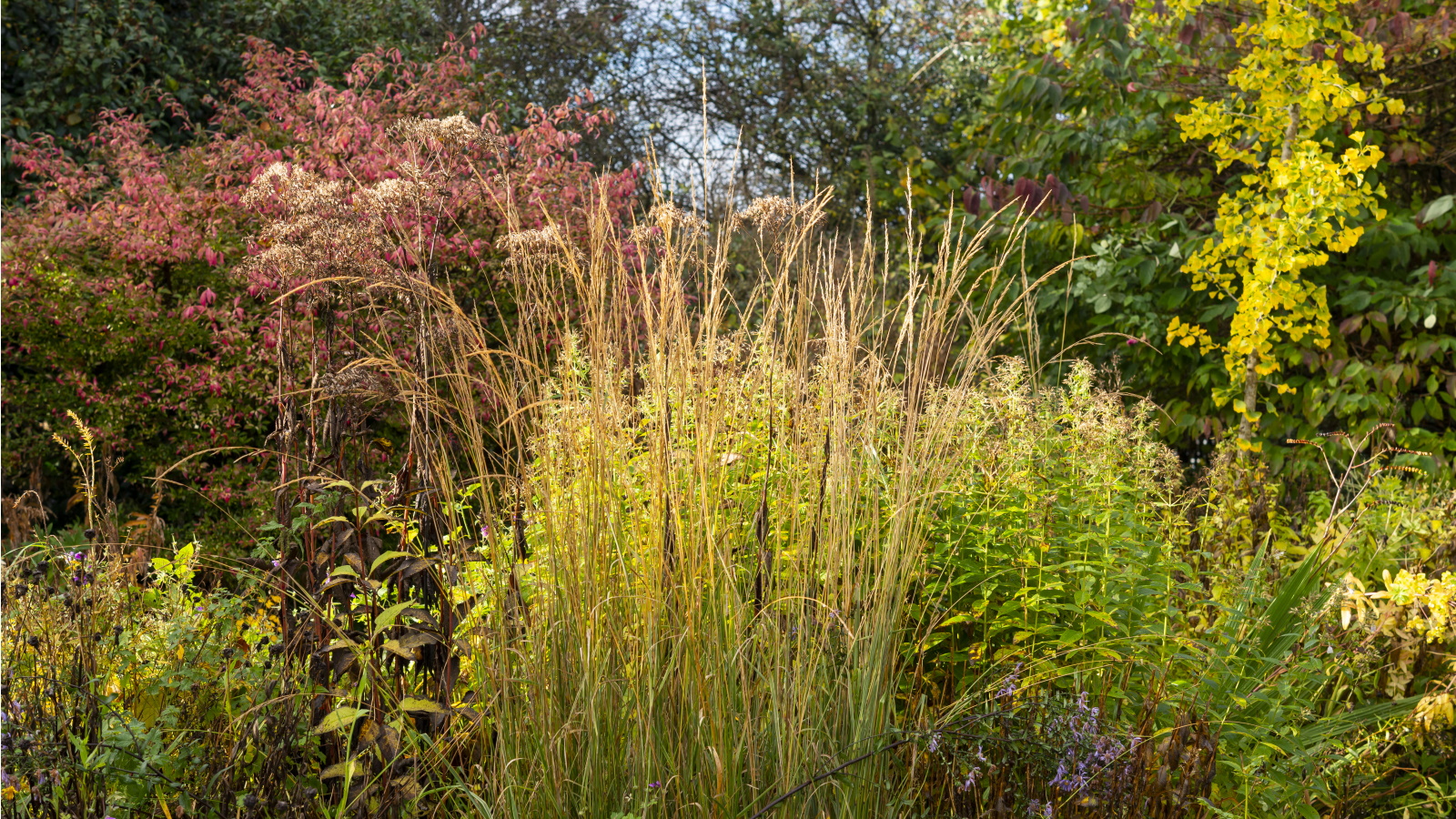

Tenielle Jordison
When creating the perfect outdoor space to enjoy, it's important to incorporate some garden screening to maintain privacy in your yard. This can look different throughout the year, with different seasonal plants stepping in to offer coverage.
From garden shrubs and perennial flowers to vibrant, compact trees, there's a natural garden privacy solution for every type of plot. For fall, there are many beautiful choices of plants for privacy that will also add color, texture and even wildlife benefits to a backyard.
Here, we've compiled some of the best fall plants for privacy so you can create a stunning backdrop for your yard while it's still warm enough to spend some time outdoors.
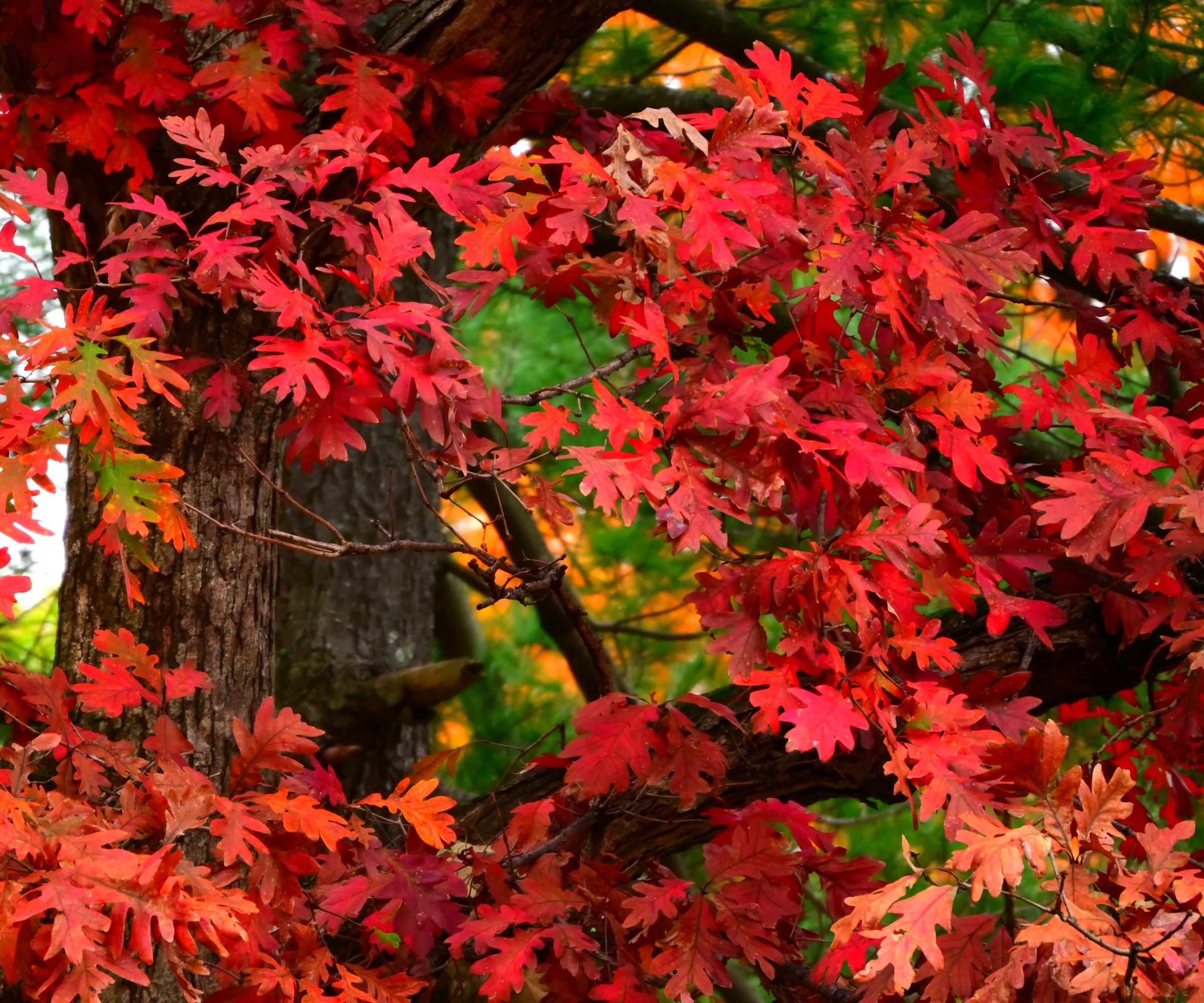
11 stunning fall plants for privacy
Update your fall garden with plants that both add to your fall palette and offer privacy from others. Some of these plants will also wow into winter, so you can enjoy their color and foliage for longer.
1. Chokeberry
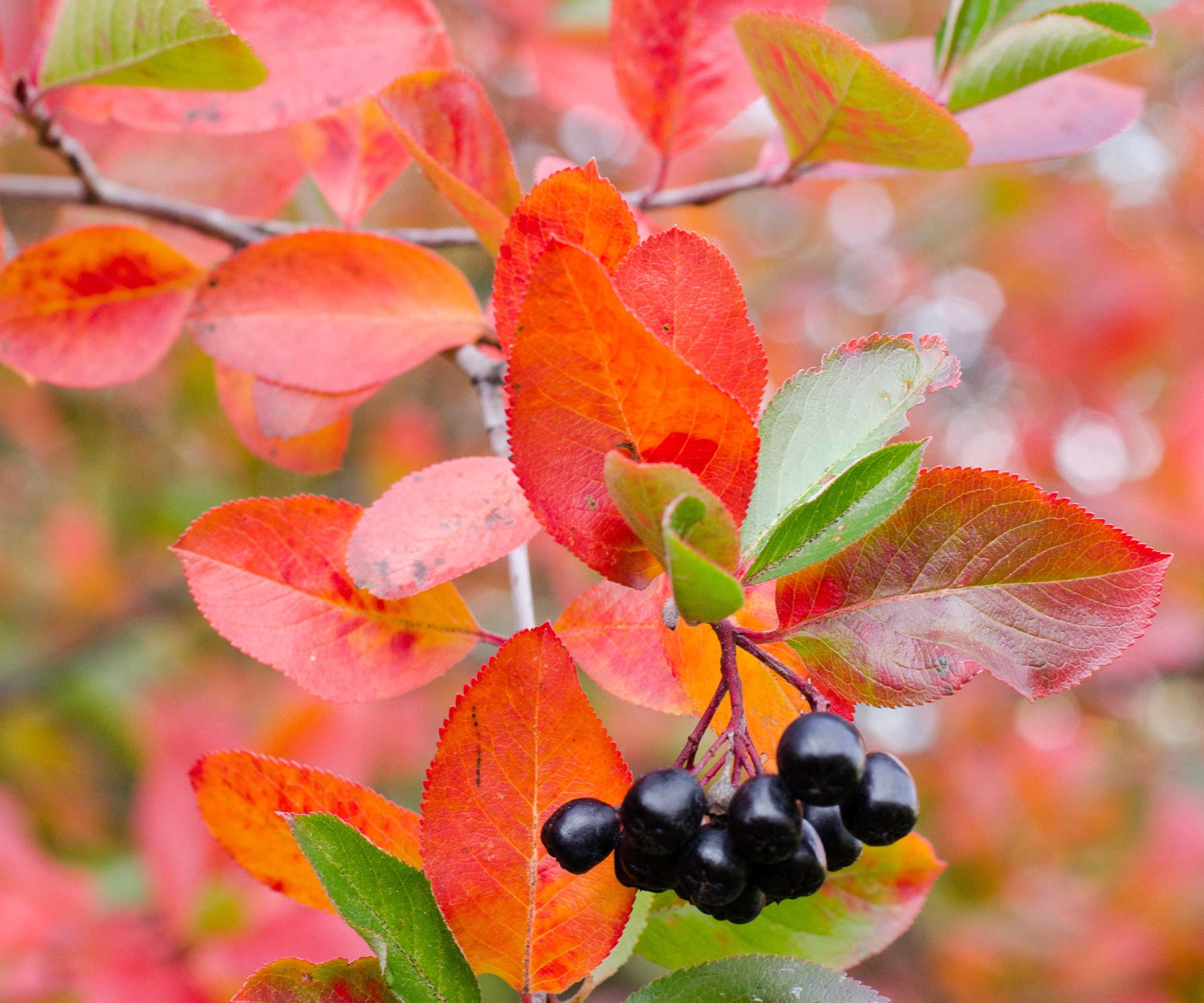
Chokeberries attract birds to backyards
- Height: 6-10ft
- Spread: 3-5ft
- Hardiness: USDA 4-9
- Best for: Wildlife gardens
Chokeberry bushes, also known as Aronia arbutifolia, can be used to create a tall, deciduous privacy hedge. In spring, their pretty white flowers will attract pollinators, while the berries that follow are great for birds. These fall shrubs for privacy look stunning when the foliage turns a fiery red, turning it into a seasonal spectacle.
These resilient shrubs can be planted in either full sun or partial shade, and should be pruned when they're dormant.
You can buy chokeberry bushes from Nature Hills.
2. Miscanthus
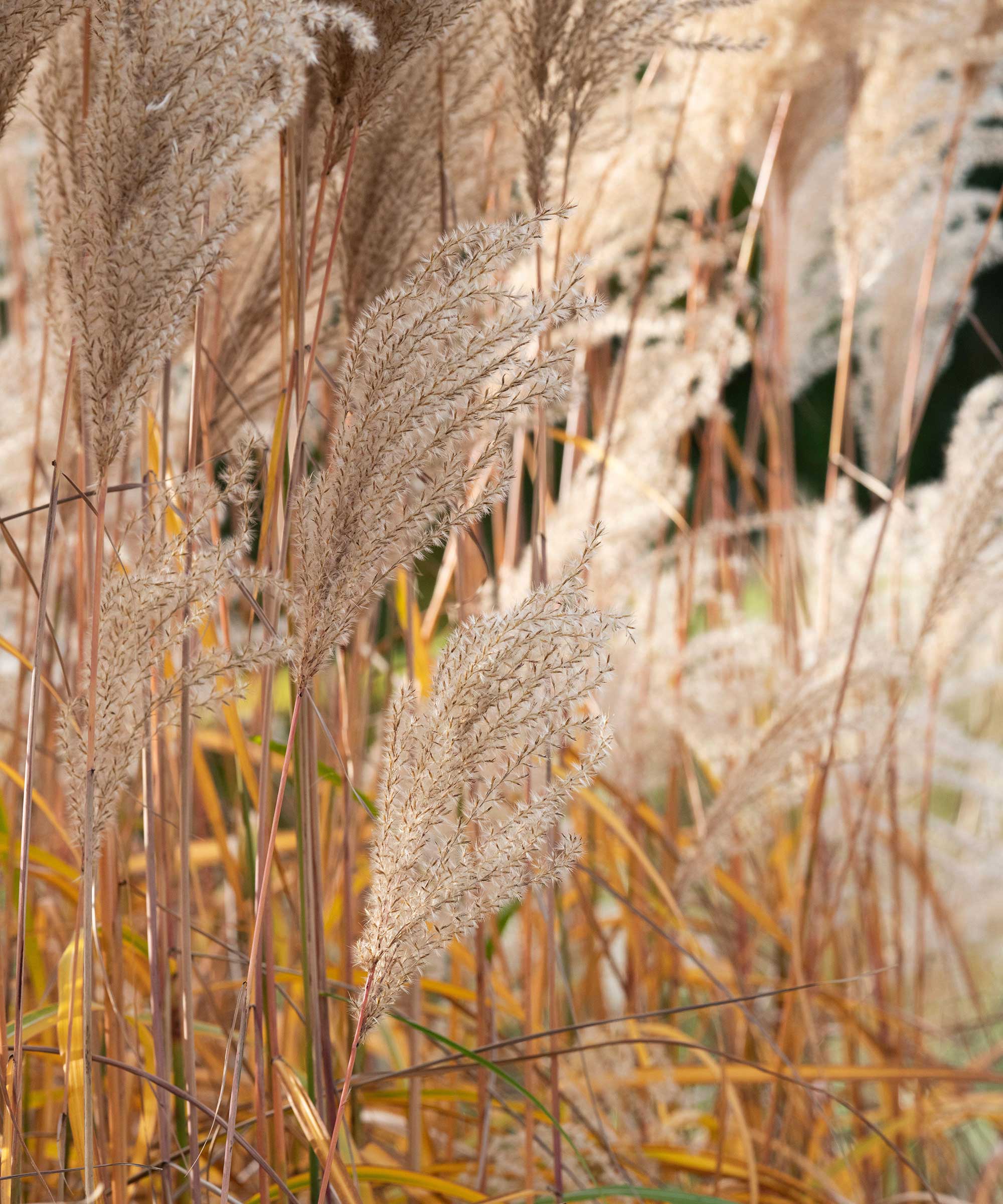
Miscanthus is a well-loved ornamental grass
- Height: 3-10ft
- Spread: 2-6ft
- Hardiness: USDA 4-9
- Best for: Modern schemes
Miscanthus, a type of ornamental grass for privacy, is a lovely choice for surrounding a fall patio. Cultivars provide height, movement, and texture, and are particularly well-suited to modern backyards and prairie-style planting.
'Miscanthus is easy to grow and looks amazing in fall with fluffy seed heads. It grows tall and dense, giving you great coverage while swaying gently in the breeze,' says Marek Bowers, landscape design expert and founder of Bolder Green.
Try 'Silver Feather', from Nature Hills, which, as its name suggests, has silvery, feathery plumes. Meanwhile, 'Fire Dragon' (also from Nature Hills) turns orange and red in the fall. Plant them in full sun in well-draining soil to help them thrive.
Rather than cutting back dying foliage, leave it to stand to develop a reflective, light-brown hue to cheer the winter garden. In early spring, you can then cut miscanthus back, leaving around four inches above ground.

Marek is a sustainable landscaper and an expert on California and Colorado low-water rebates. Marek's website, Bolder Green, is a guide to eco-friendly gardening. Through his articles on drought-tolerant landscaping and xeriscaping, readers will learn how to design stunning gardens that conserve water and support wildlife, all while adding beauty to their outdoor spaces.
3. Japanese anemone
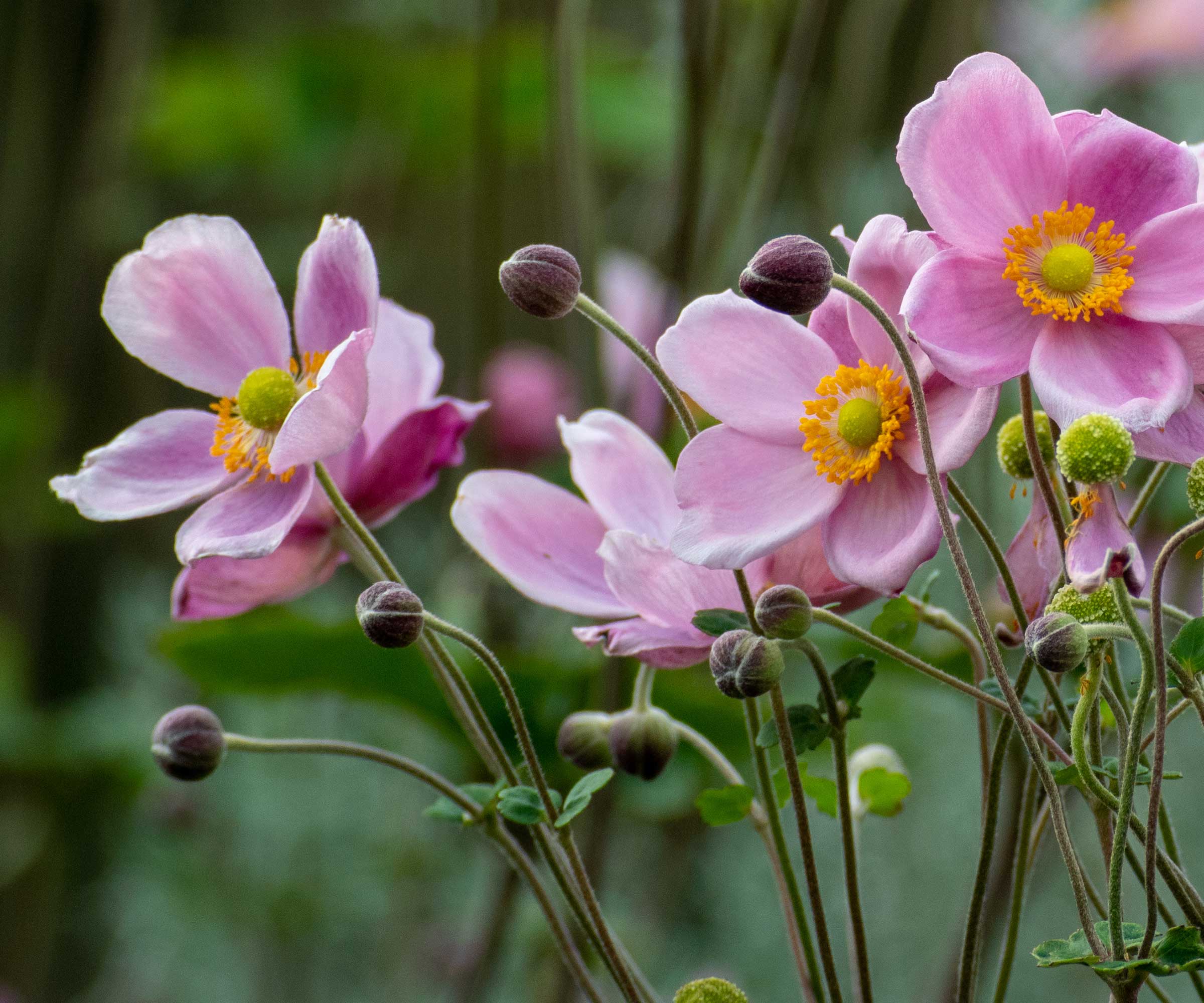
These pretty bloomers are perfect for perennial borders or large pots
- Height: 2-4ft
- Spread: 1-3ft
- Hardiness: USDA 5-8
- Best for: Late-season flowers
Japanese anemones bring a profusion of neat, pink-or-white flowers with yellow centers to the late summer and fall garden, atop long stems. Planted en masse, they are effective at creating a light screen around a seating area – and they can be planted in containers to give them extra height.
As robust herbaceous perennials that die back to ground level in winter, there's no need to prune your Japanese anemones. Grow them in well-drained but moisture-retentive soil, ideally in partial shade, for the best results and returning blooms in summer.
Try 'Curtain Call Deep Rose', from Nature Hills, for rich pink blooms.
4. Acer
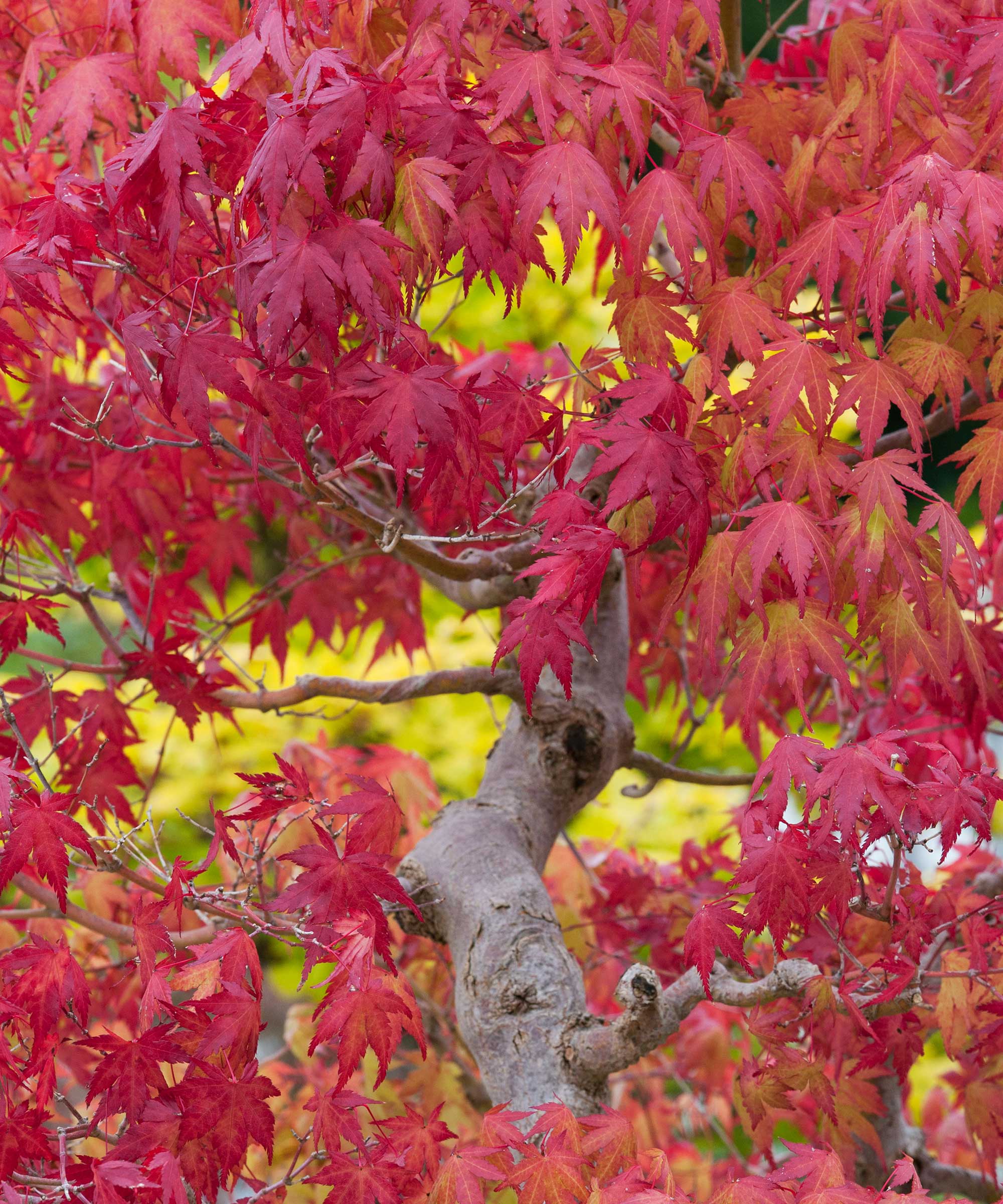
Add a vibrant pop of color to your space
- Height: 4-25ft
- Spread: 4-25ft
- Hardiness: USDA 5-9 (depending on variety)
- Best for: Colorful trees
One of the best trees for fall color, the more compact varieties of acer are ideal for adding privacy to a patio, whether planted in a nearby border or in a strategically placed pot.
'Maple leaves turn vibrant reds and oranges, which not only give you privacy but also make your yard look stunning,' says Marek.
'Red Dragon', available from Fast Growing Trees, is a beautiful choice that grows up to 12 feet once mature. In the fall, it creates a dense canopy of feathery, crimson foliage. Plus, it's disease-resistant.
5. Sunflower
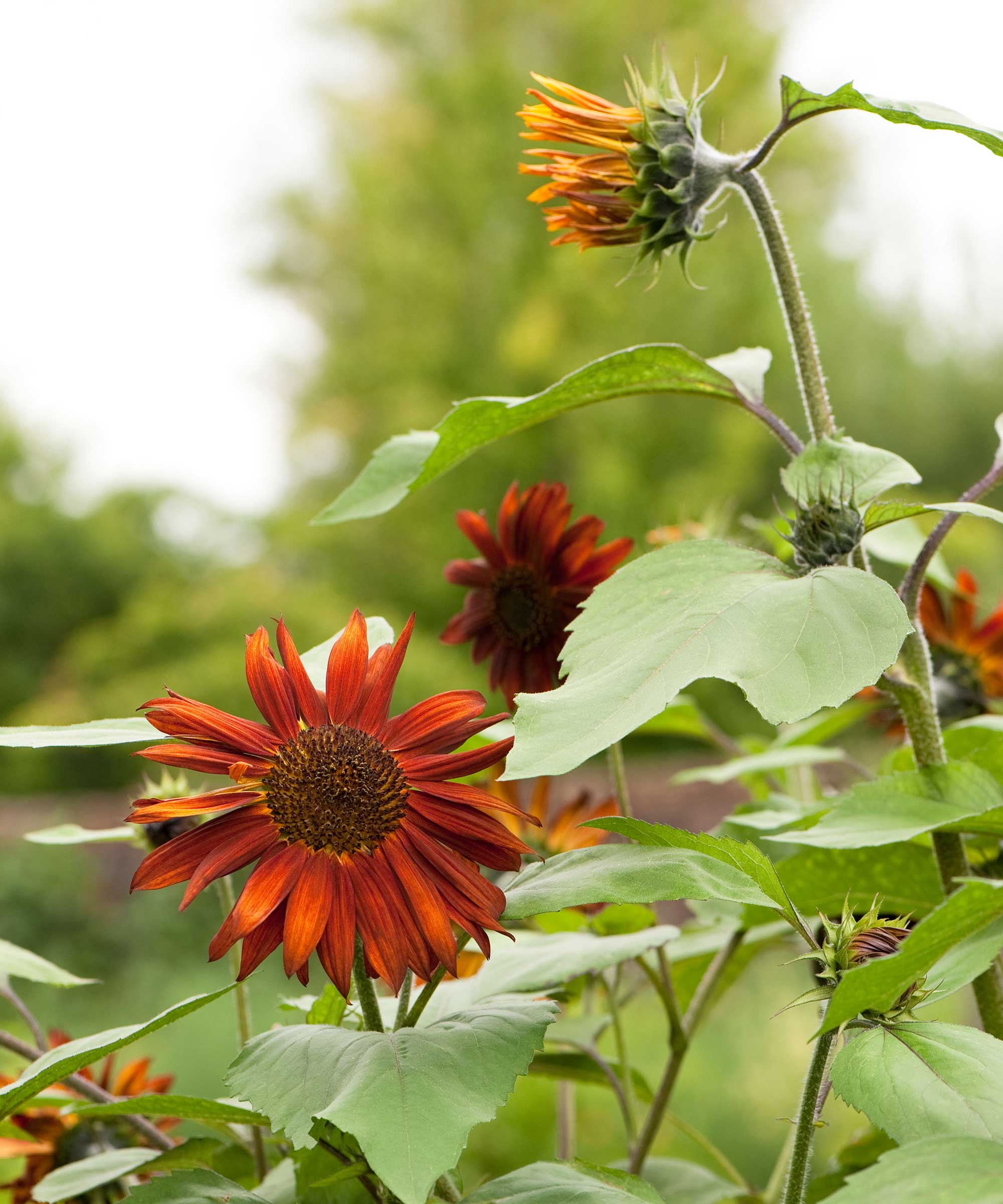
Try growing a screen of these beauties
- Height: 3-12ft
- Spread: 1-3ft
- Hardiness: USDA 2-11
- Best for: Tall flowers
Another pretty flower that lasts well into fall, sunflowers can be planted in a row to create a tall screen.
We think a packet of 'Velvet Queen' is ideal for creating a screen marking the boundary of a vegetable garden. The deep crimson and burnt orange tones are a delight amongst other autumnal hues. 'Chocolate Cherry' sunflowers, from Burpee, have a similar appearance and grow up to seven feet tall.
Once the blooms have faded, you can harvest sunflower seeds of these annuals to grow more next year, or leave them for the birds to enjoy.
6. Katsura tree
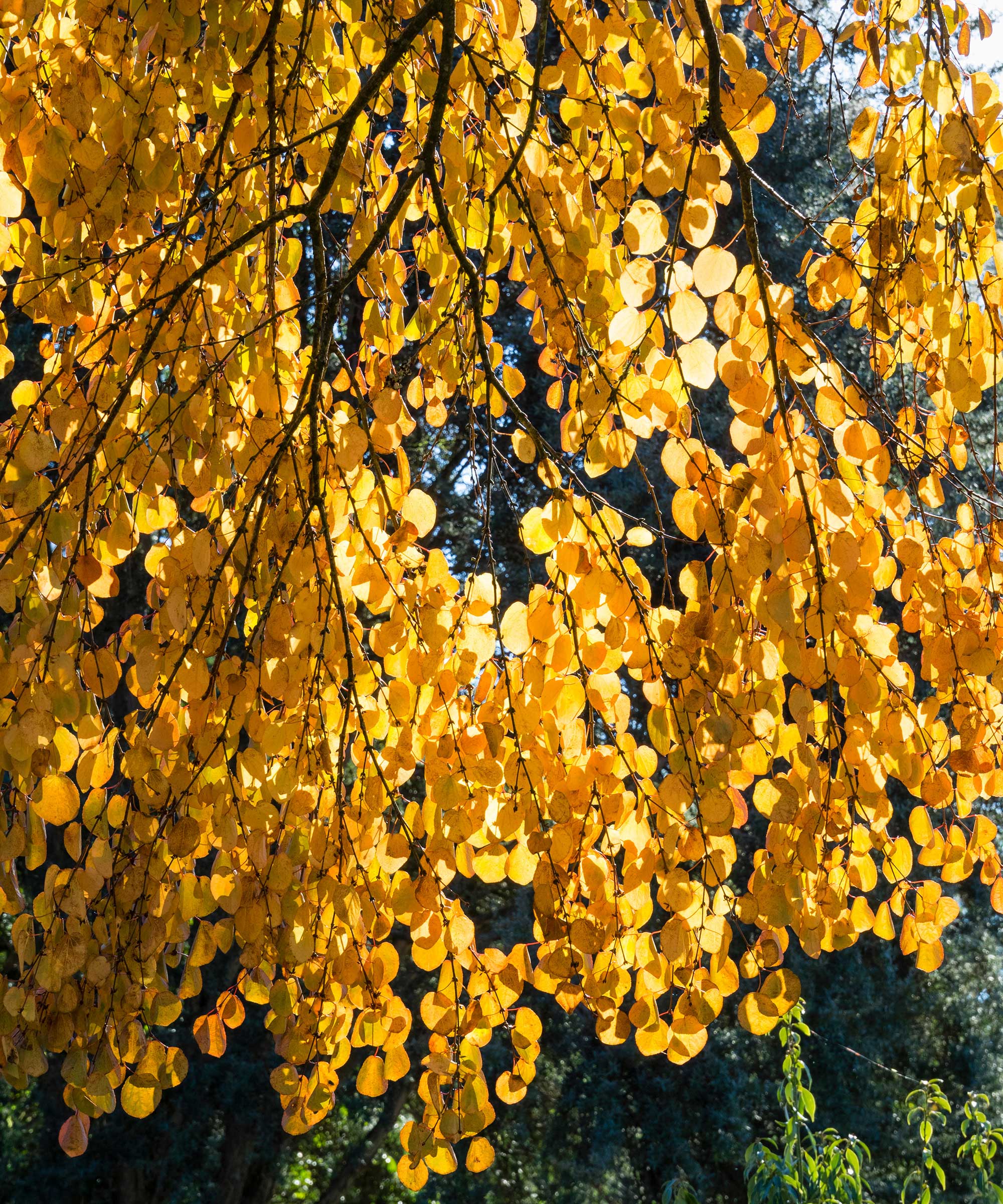
If you're looking for something taller, opt for these elegant trees
- Height: 40-60ft
- Spread: 20-30ft
- Hardiness: USDA 4-8
- Best for: Fragrant foliage
Once mature, Cercidiphyllum japonicum, or the katsura tree, will provide both privacy and is one of the best trees for shade to add your outdoor living space.
It has heart-shaped foliage which turns a beautiful spectrum of fiery hues in the fall. Not only this, but these leaves also omit a fragrance similar to caramel throughout the season.
These wide-spreading, disease-resistant, deciduous trees thrive in full sun or partial shade, in well-draining soil, and benefit from mulching.
7. Beautyberry
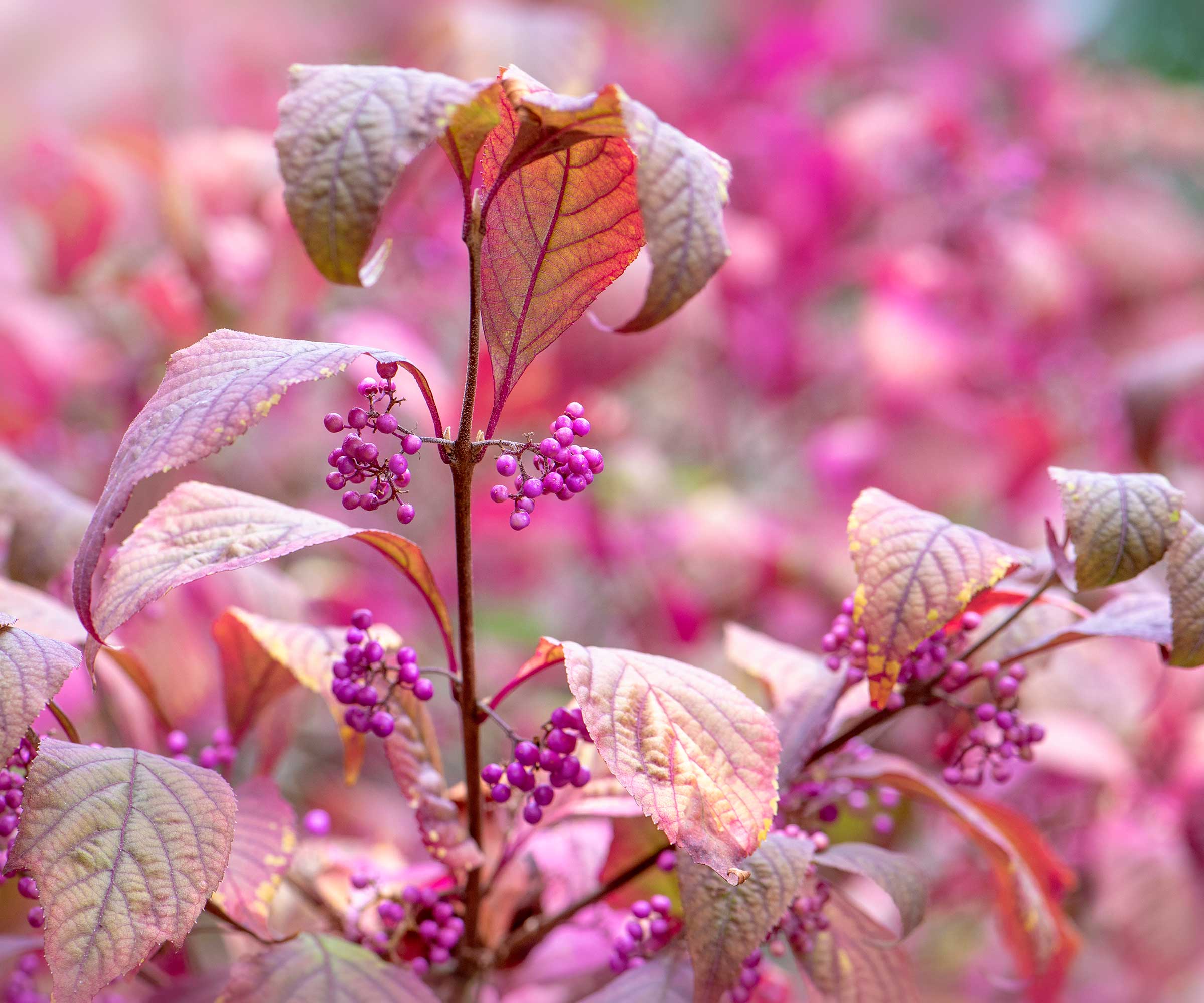
It's no wonder these shrubs are known as beautyberry
- Height: 3-6ft
- Spread: 4-6ft
- Hardiness: USDA 6-10
- Best for: Colorful berries
These gorgeous shrubs are well-loved for their clusters of jewel-like berries produced in the fall. These often hold on throughout winter as one of the best shrubs with winter berries, even when the leaves have dropped, attracting birds.
'In its maturity, the bush can rise up to three-to-five feet tall, the ideal size for hedging to provide privacy,' says Melvin Cubian from Plantin. 'Additionally, with the elegantly crisscrossing and bending branches, this plant will provide another interesting focal point to the backyard,' he adds.
They are disease, pest, and deer resistant, and – as a bonus – are also known as a mosquito-repellent plant. They can be planted in containers or in the ground to create a natural screen.
'It’s super low-maintenance,' notes Marek. Beautyberry prefers to grow in slightly acidic soil and it's wise to regularly prune this plant to keep it shapely.

Melvin is a certified gardening and plant care expert at PlantIn, which provides a personalized experience for anyone interested in planting and gardening. He is also currently studying for his masters degree in Plant Health.
8. Camellia
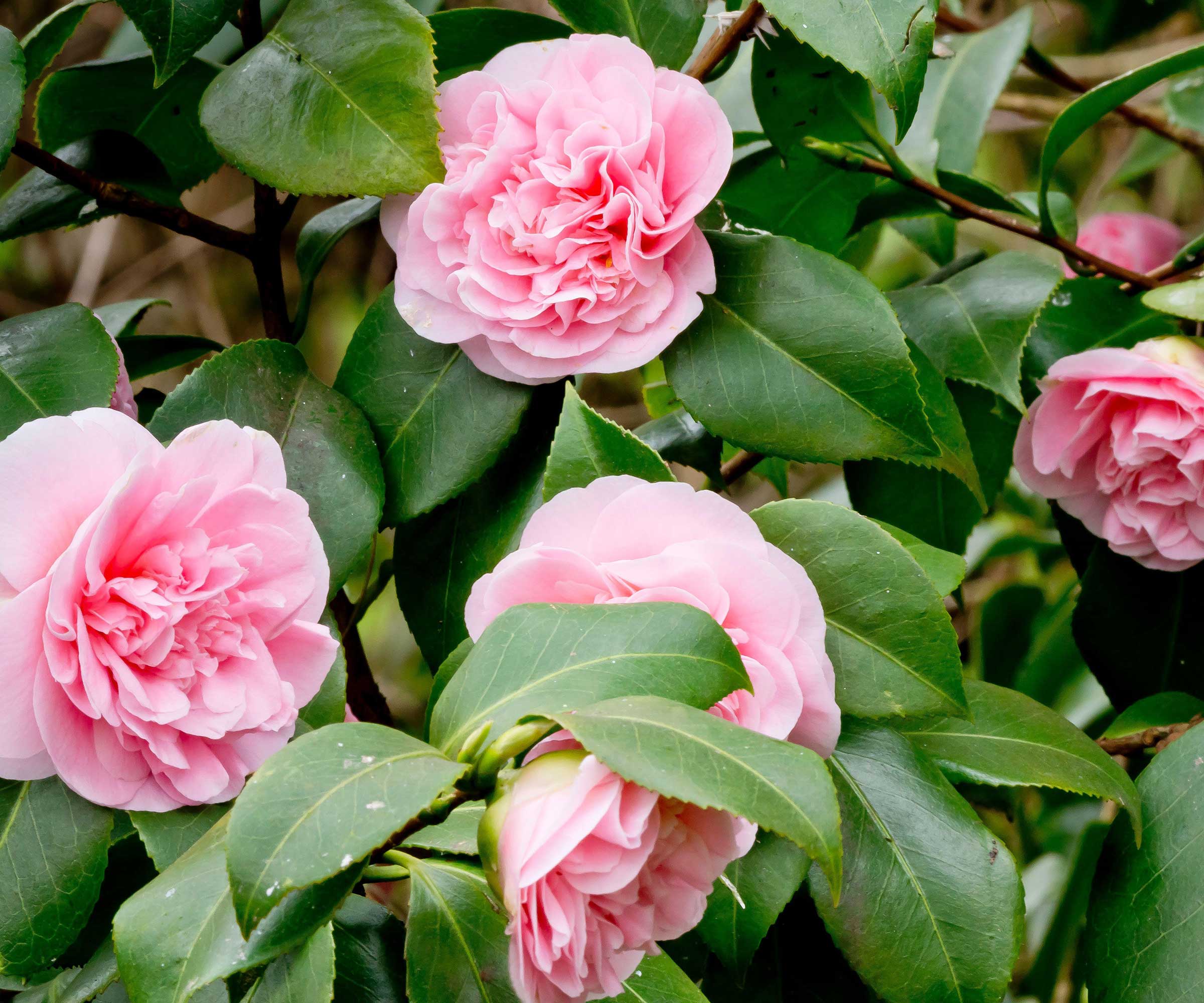
Camellias produce large, blousy blooms in shades of pink, red, yellow, and white
- Height: 4-15ft
- Spread: 6-10ft
- Hardiness: USDA 7-9
- Best for: Large, fall flowers
For privacy year-round, opt for an evergreen shrub. And if you want flowers throughout the colder months, too, then camellia is the perfect choice.
Some types of camellia, such as Camellia sasanqua 'Yuletide', available from Nature Hills, produce their large, showy blooms from fall onwards, amongst dark, glossy foliage.
They like acidic soil and a sheltered spot that isn't too sunny, and should be watered using harvested rainwater during periods of drought. There are a few camellia problems you might come across, like common pests and yellowing foliage, but they can be resolved easily.
9. Fothergilla
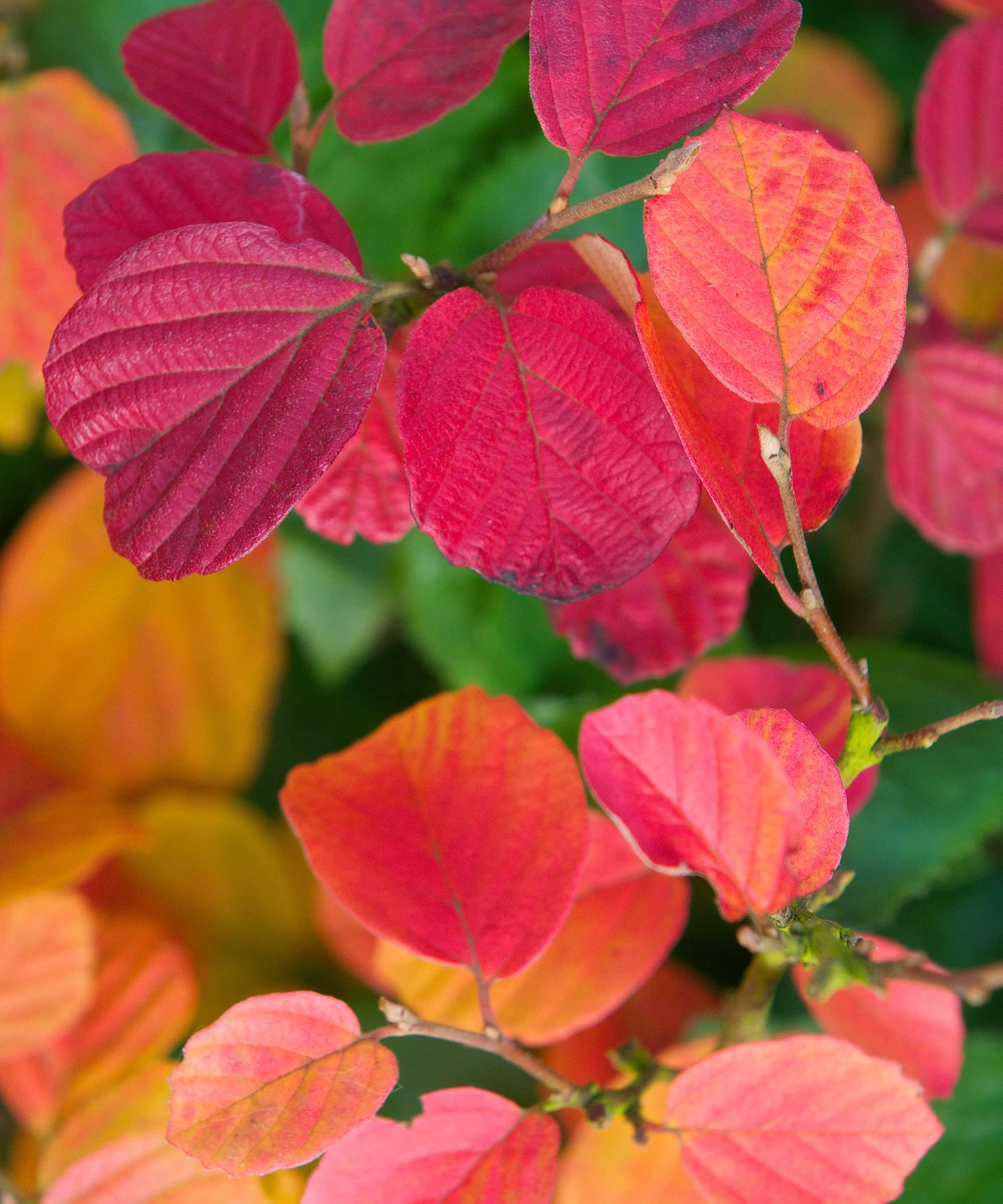
These shrubs have glorious fall foliage
- Height: 2-6ft
- Spread: 2-5ft
- Hardiness: USDA 5-10 (depending on variety)
- Best for: Pollinator-friendly spring flowers
Fothergilla displays brilliant orange, red, and yellow fall foliage. In the spring, these shrubs' fragrant flowers are among plants for pollinators, adding another layer of beauty to your garden.
'In its flowering, which happens in spring, enjoy its brush-like flowers that crown at the tip of each arching branch - a wonderful snack for bees and butterflies,' says Melvin. 'In the fall, the leaves turn yellow, red, and burgundy, which matches well with other plants in the fall landscape,' he adds.
While some are more compact, 'Mount Airy' fothergilla from Nature Hills can reach heights of six feet, making it a useful shrub for creating privacy. This plant thrives in acidic soil and benefits from mulching to consrve moisture.
10. Blue Mist Spirea
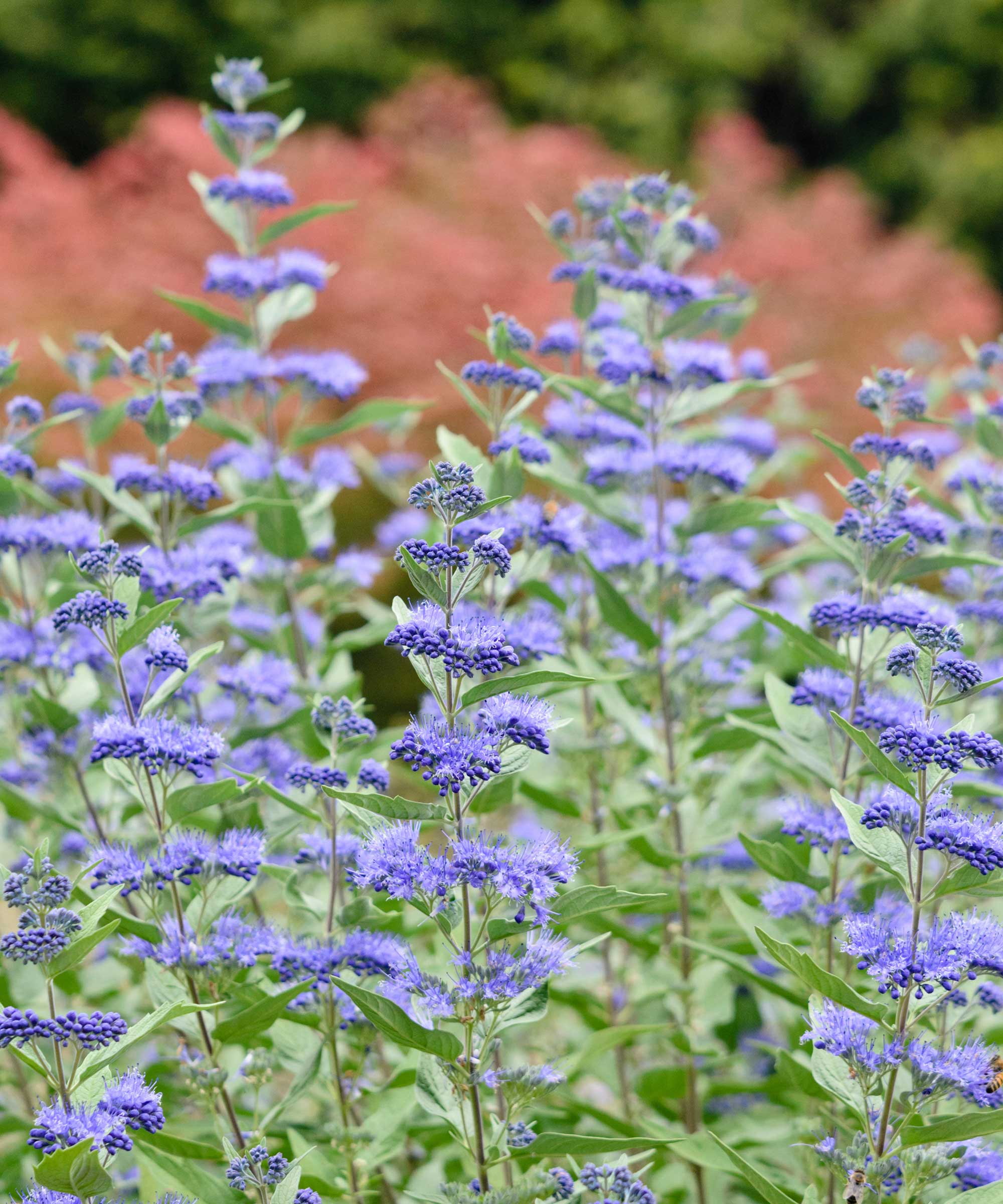
Blue beard flowers are a magnet for bees
- Height: 2-4ft
- Spread: 2-4ft
- Hardiness: USDA 5-9
- Best for: Container flowers
Blue mist spirea (Caryopteris x clandonensis) is a compact shrub that offers striking blue flowers in late summer and early fall, attracting butterflies and bees. It's also known as blue beard.
Some cultivars reach up to three feet or more in height, such as 'Dark Knight' from Nature Hills. This makes them a good low-hedge option for privacy. Like Japanese anemones, they can also be planted in raised containers for extra height to screen a seating space.
It's a relatively low-maintenance plant, requiring well-drained soil and occasional pruning to shape it.
11. Forsythia
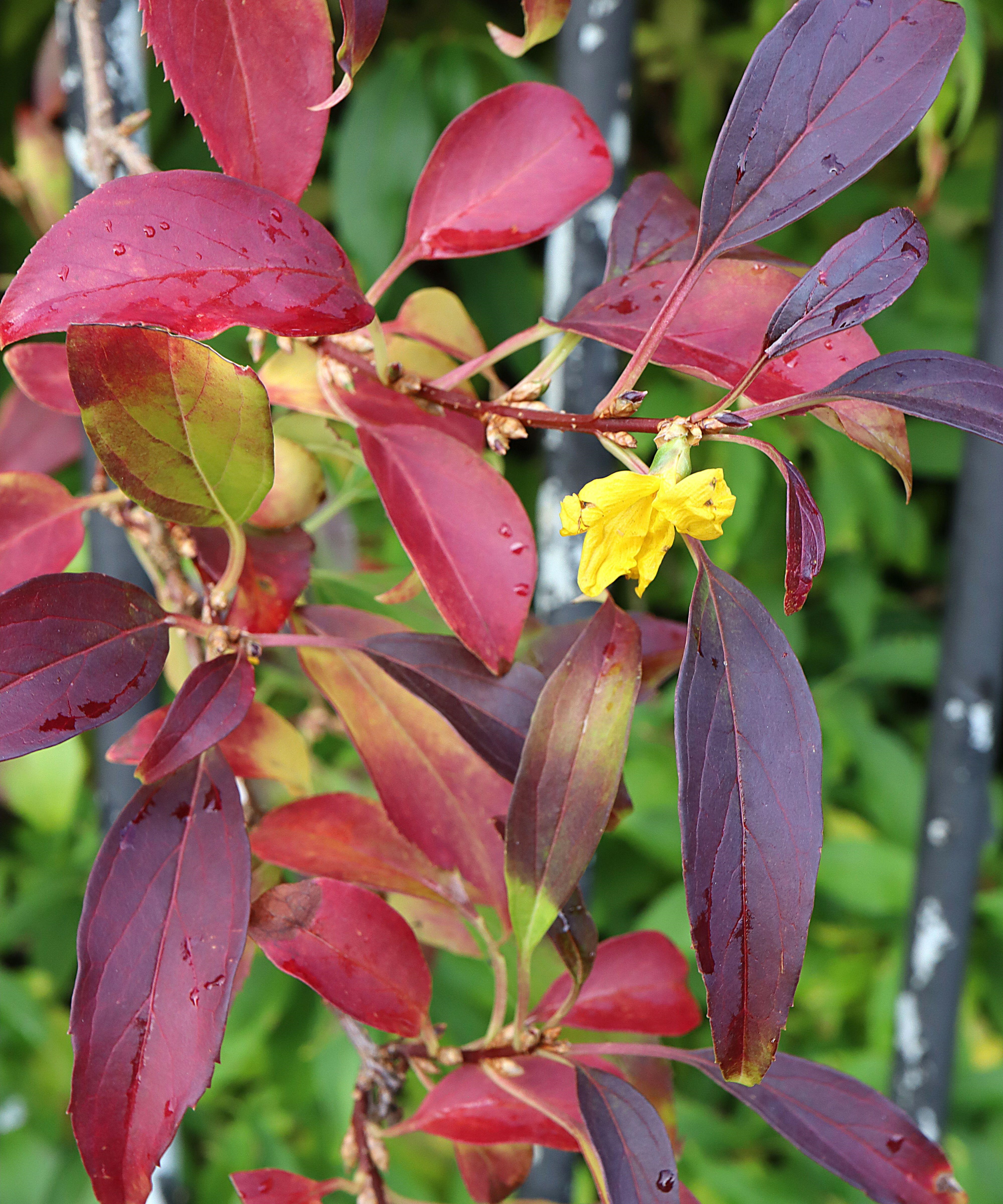
- Height: 2-6ft
- Spread: 2-6ft
- Hardiness: USDA 4-9
- Best for: Colorful hedging plant
Forsythia is loved for the bright yellow blooms it shows off in spring, but it also makes a great contender for a fall privacy plant. After enjoying its blooms, watch the foliage of forsythia turn red, orange, and even purple in fall.
'If you fancy colorful hues for your view-blocking living barriers, forsythia should be on your top list. Its slender branches can dramatically arch, providing another sense of garden aesthetics,' says Melvin.
It grows in various soil types, thriving best in a sunny position, and you should make sure to prune forsythia after it finishes blooming to encourage it to remain compact and bushy through summer and fall. Something to note, however, is that after providing good screening in fall, forsythia will lose its leaves in winter.
If you love this plant for its yellow flowers, you'll enjoy 'Meadowlark' (from Nature Hills) for its fall foliage that is also a yellow and often purple.
FAQs
What are the best fall privacy plants for pots?
Large containers filled with lofty plants are an effective solution for creating privacy in a smaller space. A compact variety of acer, for instance, makes a striking addition to a fall patio. Tall and hardy evergreen herbs, such as rosemary or bay, are other good choices and are useful in the kitchen, too.
What are the best fall privacy plants for shade?
As well as beautyberry, Japanese anemones, and acers, try oakleaf hydrangeas which have colorful fall foliage. Many evergreen shrubs also do well in less sunny spots, including holly, box, and varieties of viburnum.
Many of these can be planted together for a truly stunning display that spans different heights. And if you want to maintain a sense of garden privacy throughout the winter – when many of the plants will drop their leaves – consider planting an evergreen hedge behind them. Alternatively, you could install a sturdy fence or wall, perhaps adorned with a fast-growing climbing plant to create a living fence.
Sign up to the Homes & Gardens newsletter
Design expertise in your inbox – from inspiring decorating ideas and beautiful celebrity homes to practical gardening advice and shopping round-ups.

Holly started writing about gardening five years ago, and she is a regular contributor to Homes & Gardens. She has also written many gardening features for Woman & Home and Real Homes, too. She has previous experience as a professional gardener, where she helped to plant and maintain private gardens. Holly has also looked after allotment plots over the years and loves to grow her own flowers and veggies from seed. In her spare time, she enjoys visiting local gardens, botanical drawing, and tending to her ever-growing collection of houseplants.
- Tenielle JordisonNews Writer (Gardens)
-
 The instinct-based Toddler Decluttering Method will reduce clutter by half in seconds – and it's not for children
The instinct-based Toddler Decluttering Method will reduce clutter by half in seconds – and it's not for childrenIt's a simple but effective method to cull clutter quickly in your home
By Ciéra Cree
-
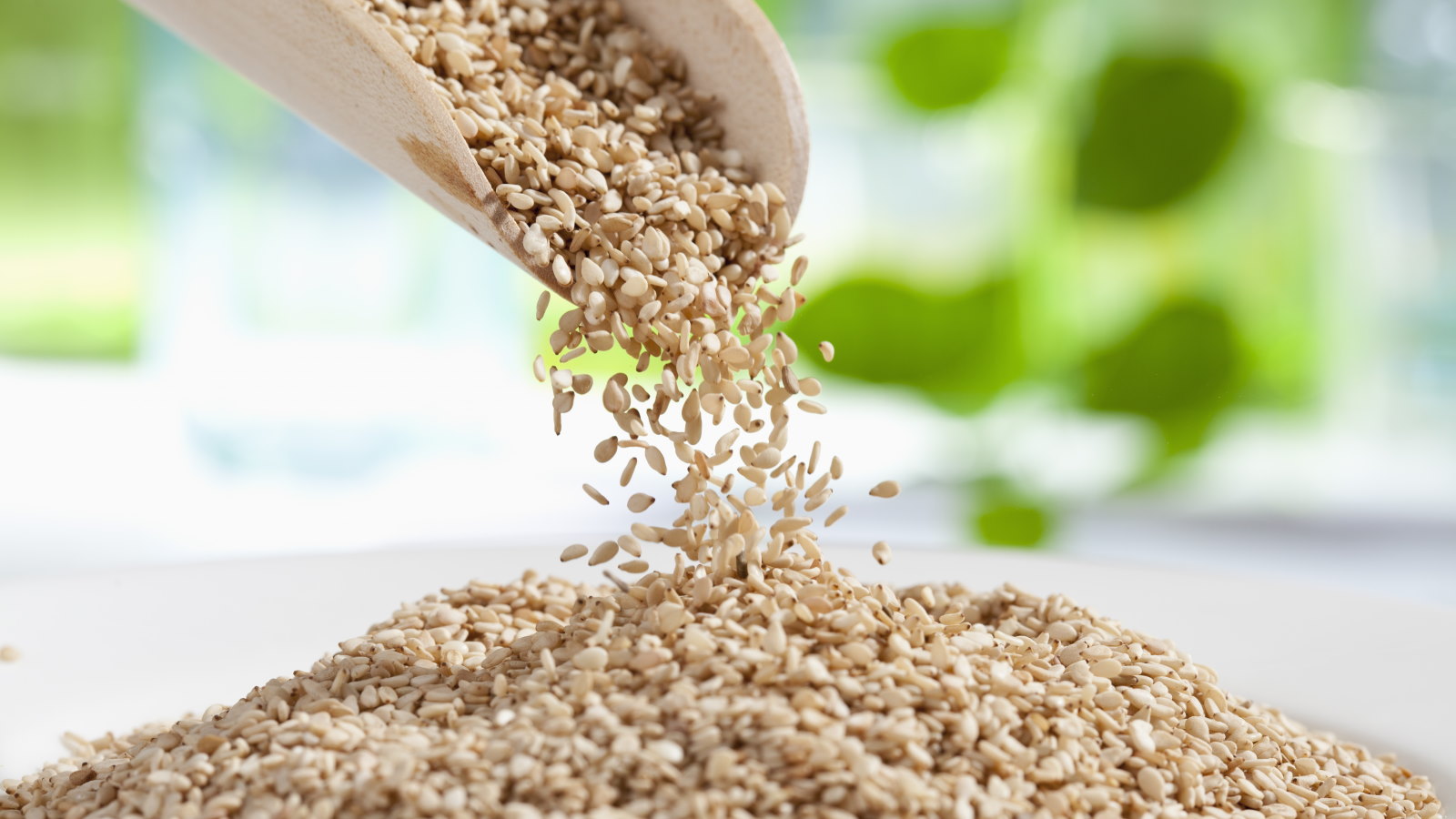 How to grow sesame plants and harvest nutrient-rich seeds for snacking, cooking, or baking
How to grow sesame plants and harvest nutrient-rich seeds for snacking, cooking, or bakingSesame plants are easy to grow, provided you have a warm climate
By Drew Swainston
-
 7 of the fastest growing flowers to plant in spring for early summer blooms
7 of the fastest growing flowers to plant in spring for early summer bloomsSow these seeds now and be greeted with early summer color and repeat blooms in your yard
By Jacky Parker
-
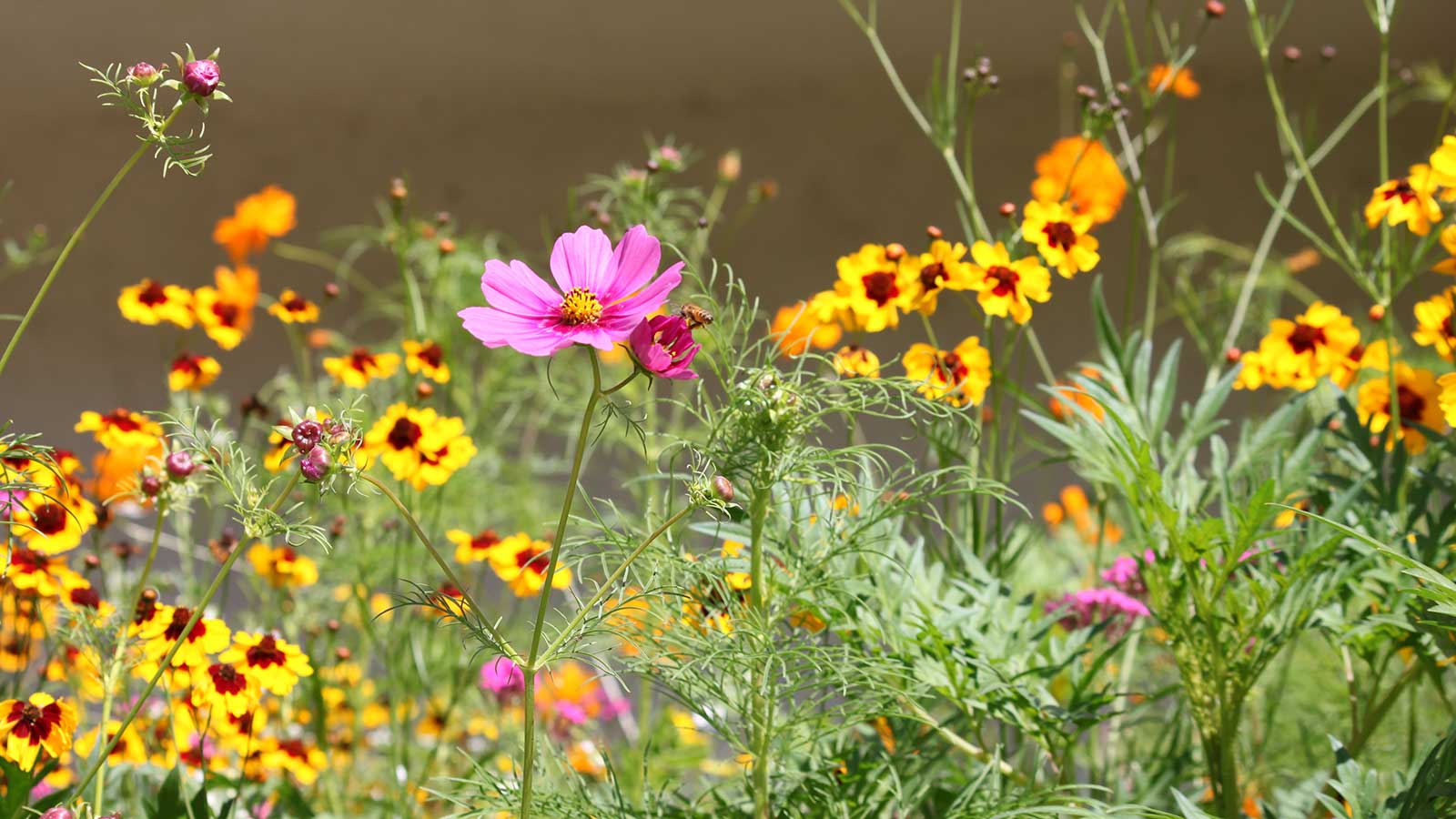 How to design a mini meadow in pots – and welcome birds, bees and butterflies to your urban wildlife garden this summer
How to design a mini meadow in pots – and welcome birds, bees and butterflies to your urban wildlife garden this summerExperts share advice on species recommendations, soil, and types of containers to use for meadow planting
By Holly Crossley
-
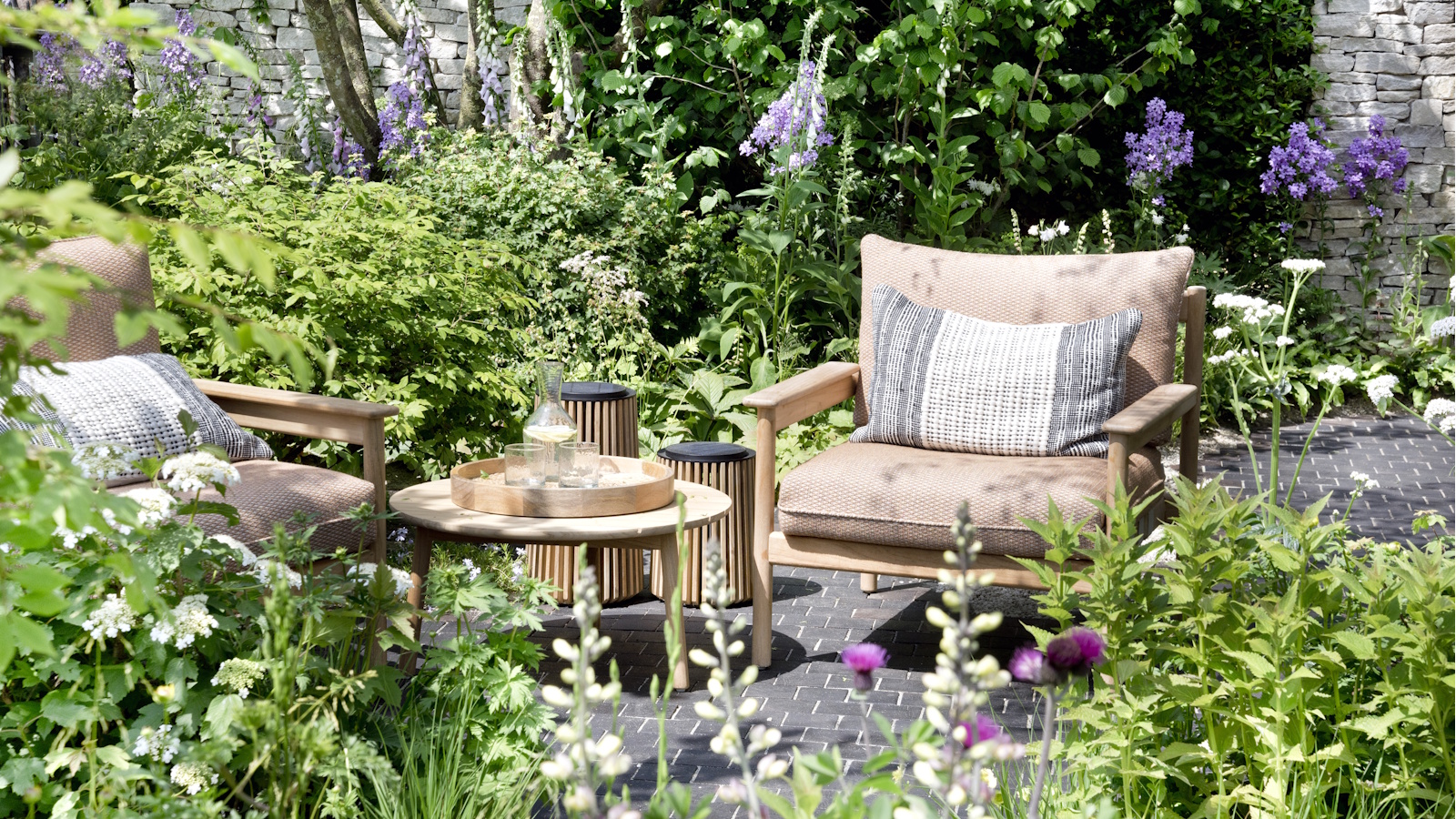 This $20 pop-up greenhouse from ALDI is perfect for small yards – it will turbocharge your tomato harvests this summer
This $20 pop-up greenhouse from ALDI is perfect for small yards – it will turbocharge your tomato harvests this summerEasy to use and compact to store, pop-up greenhouses are ideal for patio or balcony gardeners
By Thomas Rutter
-
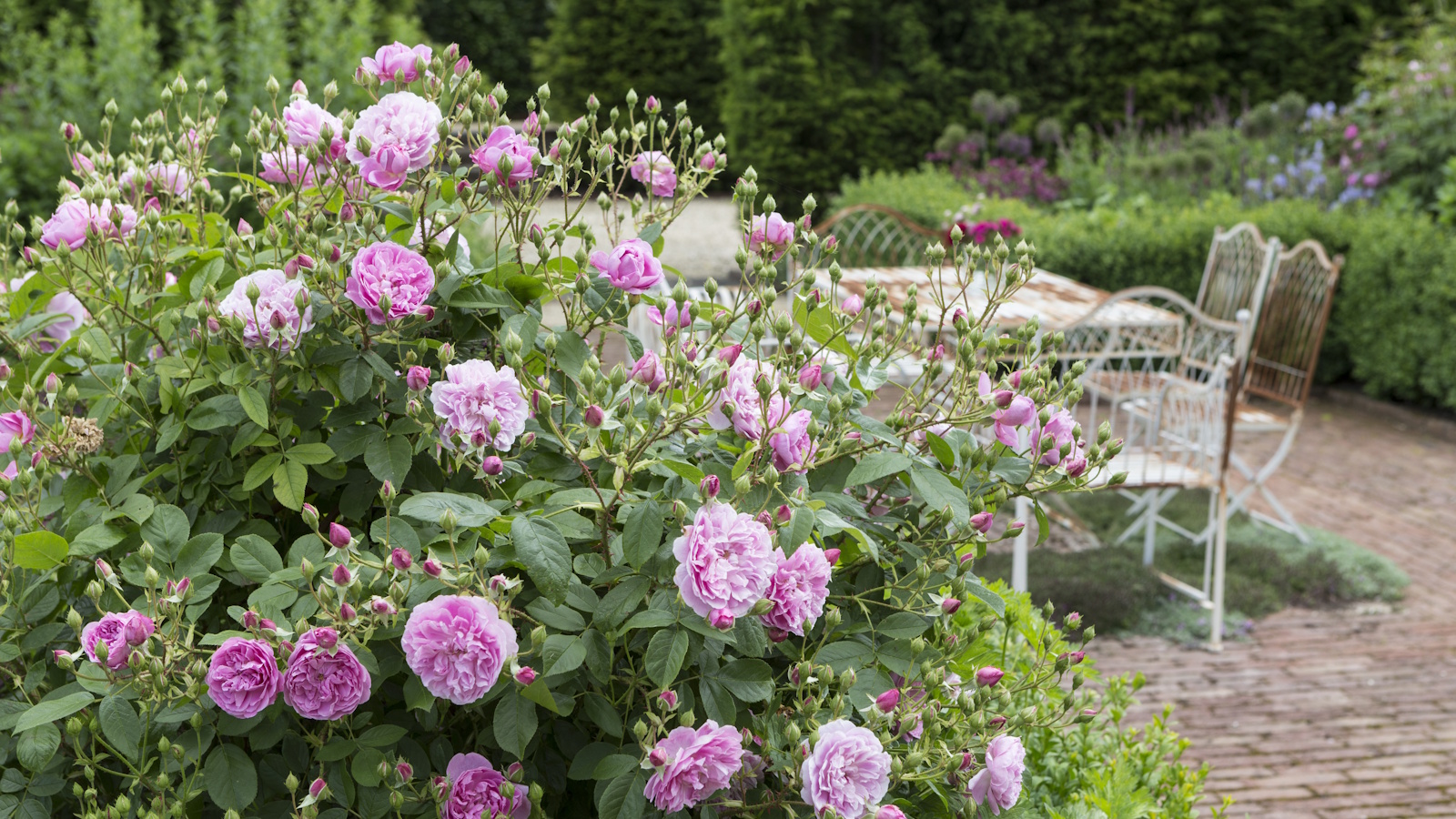 How to weed a garden quickly – professional gardeners reveal the five-minute weeding jobs to do now and get your yard summer-ready
How to weed a garden quickly – professional gardeners reveal the five-minute weeding jobs to do now and get your yard summer-readyShort on time? These time-efficient tasks will keep on top of problem plants
By Thomas Rutter
-
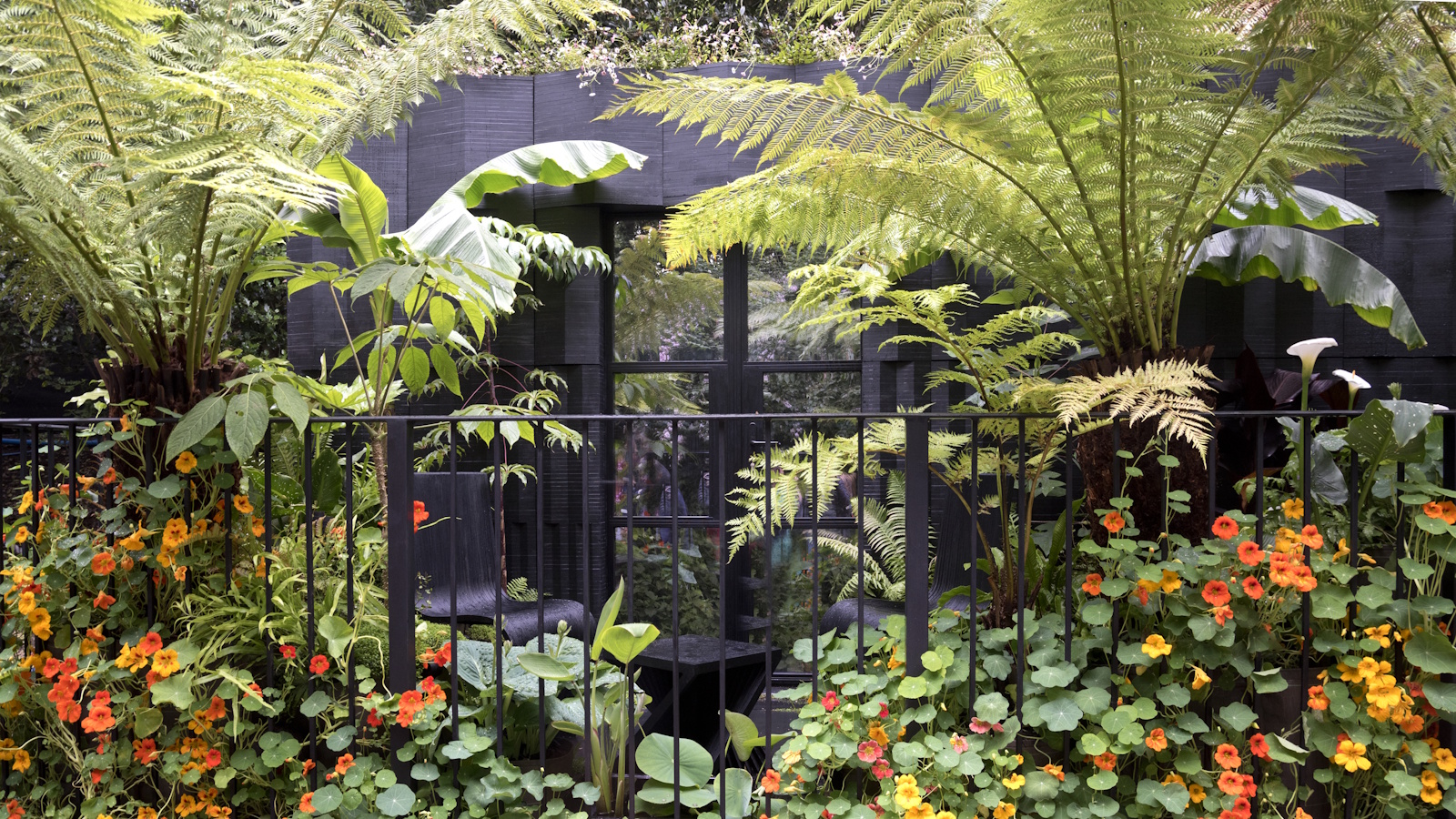 Small yard but want to grow your own crops? This wooden cold frame is 40% off at Wayfair – and it's perfect for tiny patios and apartments
Small yard but want to grow your own crops? This wooden cold frame is 40% off at Wayfair – and it's perfect for tiny patios and apartmentsCold frames are a sensible investment for any gardeners struggling for space on balconies, backyards or patios
By Thomas Rutter
-
 7 native perennials to plant in April – for glorious flowering displays to attract bees, butterflies, and hummingbirds
7 native perennials to plant in April – for glorious flowering displays to attract bees, butterflies, and hummingbirdsDiscover some of the best perennials to plant in April to make your garden a hotspot for wildlife
By Drew Swainston
-
 7 shrubs to plant in April to transform beds and borders – including native plants and bushes suitable for dry or wet spots
7 shrubs to plant in April to transform beds and borders – including native plants and bushes suitable for dry or wet spotsThese shrubs can bring flowers, texture, and fragrance, as well as attracting beneficial insects and birds
By Drew Swainston
-
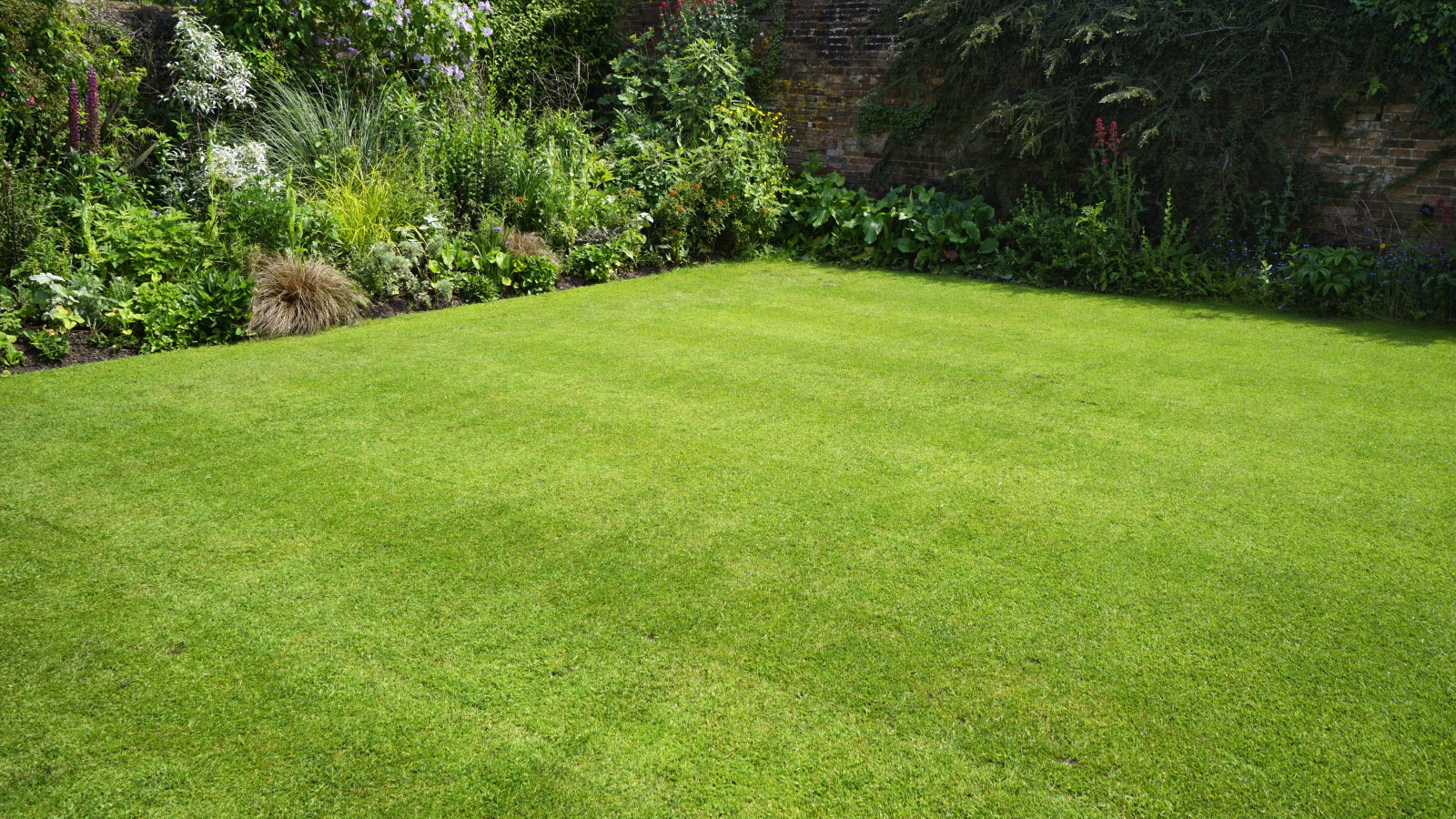 I'm a lawn care expert, and always do these 7 jobs in April to ensure thick, green grass all summer long
I'm a lawn care expert, and always do these 7 jobs in April to ensure thick, green grass all summer longTransform your lawn with these simple yet highly effective April lawn care tasks
By Drew Swainston